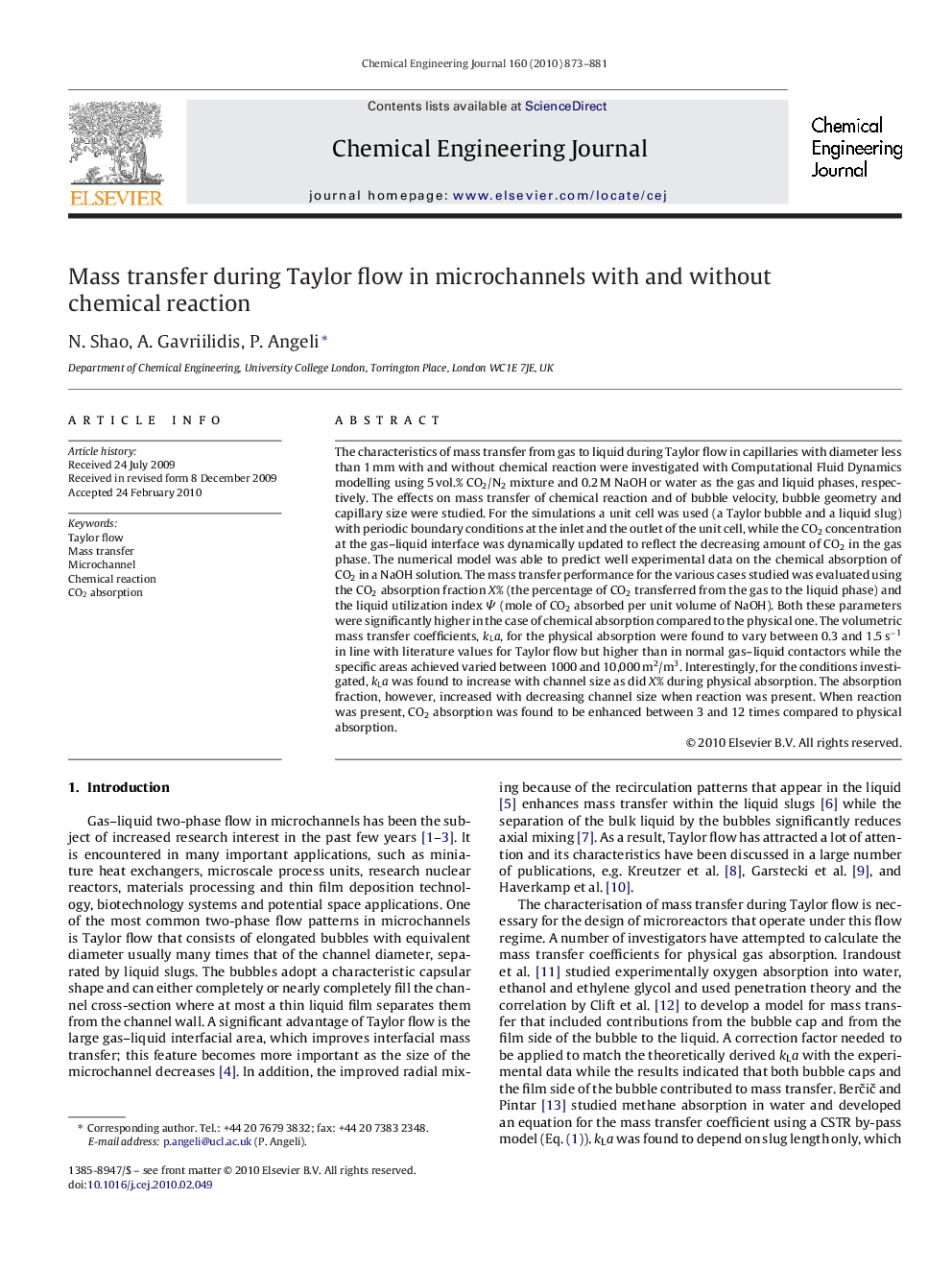| کد مقاله | کد نشریه | سال انتشار | مقاله انگلیسی | نسخه تمام متن |
|---|---|---|---|---|
| 152597 | 456500 | 2010 | 9 صفحه PDF | دانلود رایگان |

The characteristics of mass transfer from gas to liquid during Taylor flow in capillaries with diameter less than 1 mm with and without chemical reaction were investigated with Computational Fluid Dynamics modelling using 5 vol.% CO2/N2 mixture and 0.2 M NaOH or water as the gas and liquid phases, respectively. The effects on mass transfer of chemical reaction and of bubble velocity, bubble geometry and capillary size were studied. For the simulations a unit cell was used (a Taylor bubble and a liquid slug) with periodic boundary conditions at the inlet and the outlet of the unit cell, while the CO2 concentration at the gas–liquid interface was dynamically updated to reflect the decreasing amount of CO2 in the gas phase. The numerical model was able to predict well experimental data on the chemical absorption of CO2 in a NaOH solution. The mass transfer performance for the various cases studied was evaluated using the CO2 absorption fraction X% (the percentage of CO2 transferred from the gas to the liquid phase) and the liquid utilization index Ψ (mole of CO2 absorbed per unit volume of NaOH). Both these parameters were significantly higher in the case of chemical absorption compared to the physical one. The volumetric mass transfer coefficients, kLa, for the physical absorption were found to vary between 0.3 and 1.5 s−1 in line with literature values for Taylor flow but higher than in normal gas–liquid contactors while the specific areas achieved varied between 1000 and 10,000 m2/m3. Interestingly, for the conditions investigated, kLa was found to increase with channel size as did X% during physical absorption. The absorption fraction, however, increased with decreasing channel size when reaction was present. When reaction was present, CO2 absorption was found to be enhanced between 3 and 12 times compared to physical absorption.
Journal: Chemical Engineering Journal - Volume 160, Issue 3, 15 June 2010, Pages 873–881